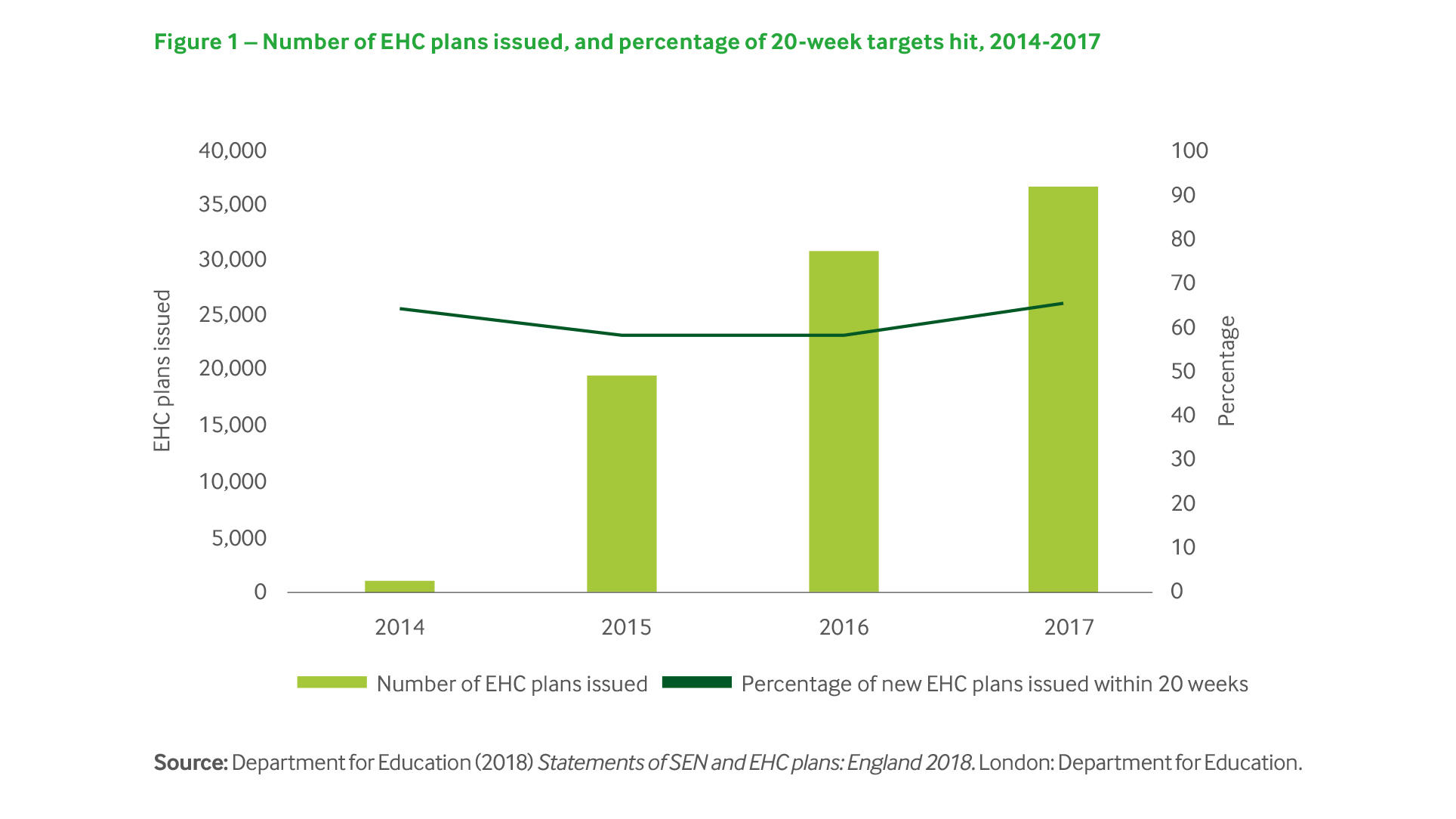The importance of investing in, and then designing services to support, the health of our children cannot be overstated. What happens in the earliest stages of life shapes what happens later on, and the time it takes to provide this support is key.
Delays and long waiting times for diagnosis, followed by inadequate or ineffective support, can be significant barriers to a child or young person’s development. And yet too many are being failed at these two critical junctures.
At our 2018 annual representatives meeting, members expressed a particular concern about the diagnosis of children and young people affected by autism spectrum disorder and the support that is available through education, health and care plans in England. Both these issues are explored in further detail below.
Delays in waiting times from referral to diagnostic assessment
It is estimated that there are around 700,000 people in the UK, including one in 100 children, with a diagnosis of autism spectrum disorder.
In recent years the policy response has started to reflect the scale of these issues and has led to a greater awareness and focus on autism spectrum disorder, including each UK nation setting out their own strategy.
Key points
- Children and young people are having to wait too long to start their autism diagnostic assessment.
- Across the UK, the different national strategies set out targets for when a diagnosis assessment should commence, from 26 weeks in Wales to 13 weeks in Northern Ireland.
- Data obtained through Freedom of Information request by the All Party Parliamentary Group for Autism and Norman Lamb MP in 2018 show these targets are being routinely missed.
- The FOI data show that in England, less than 10% of children had their diagnosis started within the three-month target. Data from the devolved nations show similar results, for example in Scotland 74% of cases took longer than the target of 119 days.
- The potential impacts of a delayed diagnosis on a child’s development include denying a child or young person the opportunity to understand their response to different situations, causing undue stress to families, delaying the diagnosis of other mental health conditions and increased financial costs.
Recommendations for improving waiting times to start diagnosis
- Local areas should be held to account for meeting average waiting time targets for starting a diagnostic assessment.
- Adequate funding should be provided to support local areas to ensure no child or young-person is waiting longer than three months for initial diagnostic assessment, and national standards on autism care are met.
Briefing: delays in waiting times from referral to diagnostic assessment for autism spectrum disorder
Supporting young people in England with autism spectrum disorder
In England, education, health and care plans are the mechanism to identify what additional support is required to help meet the needs of children and young people aged up to 25 with special educational needs and disabilities, including those with autism spectrum disorder.
The Children and Families Act 2014 – the legislation which established and underpins education, health and care plans – set out a deadline which requires local authorities to deliver plans within 20 weeks of receiving a request for an EHC needs assessment.
Key points
- The 20-week target is vital given the crucial stage of development that children and young people seeking support are invariably at.
- Well-implemented plans facilitate child-centred support by coordinating the various health, social care and educational provisions that are needed to provide support. This can help those with autism spectrum disorder to attend mainstream education and limit the health implications, for example, attending inpatient care.
- Since education health and care plans were first introduced in 2014 there has been a year-on-year rise in the number of plans that have been issued.
- The most recent data show an 86% increase in the number of plans produced between 2015 (the first full-year of the plans being applied) and 2017.
- The latest data only around 65% of plans are issued within the Government’s 20 week timeline. This figure has remained largely unchanged over the last three years.
- In 2017, while 49 local authorities were able to deliver over 85% of their plans within the 20-week target, there were nine authorities who were able to deliver within the 20-week target only 15% of the time.
- The performance of local authorities in delivering against the 20-week target also varies from year to year.

Action to improve poor performance against waiting times
Children and young people with ASD have shone a light on the problems accessing EHC plans. Doctors have seen this across the health-service and are helping patients to manage the health consequences.
It is important that the Government recognises the scale of the issue, and develops a more in-depth understanding of the long-term solutions that are urgently needed. Specific actions that are required include:
- the government should conduct a formal review into the issues facing the delivery of EHC plans in England;
- adequate long-term funding should be provided to local authorities, and then to schools through the high-needs block, in order to meet the increased demand for support from EHC plans.

